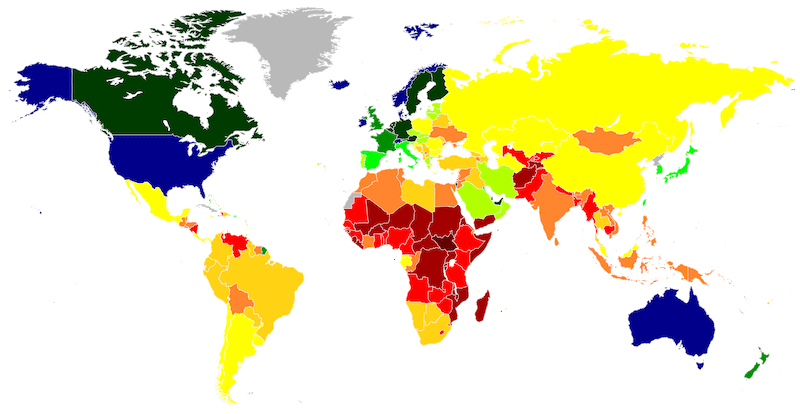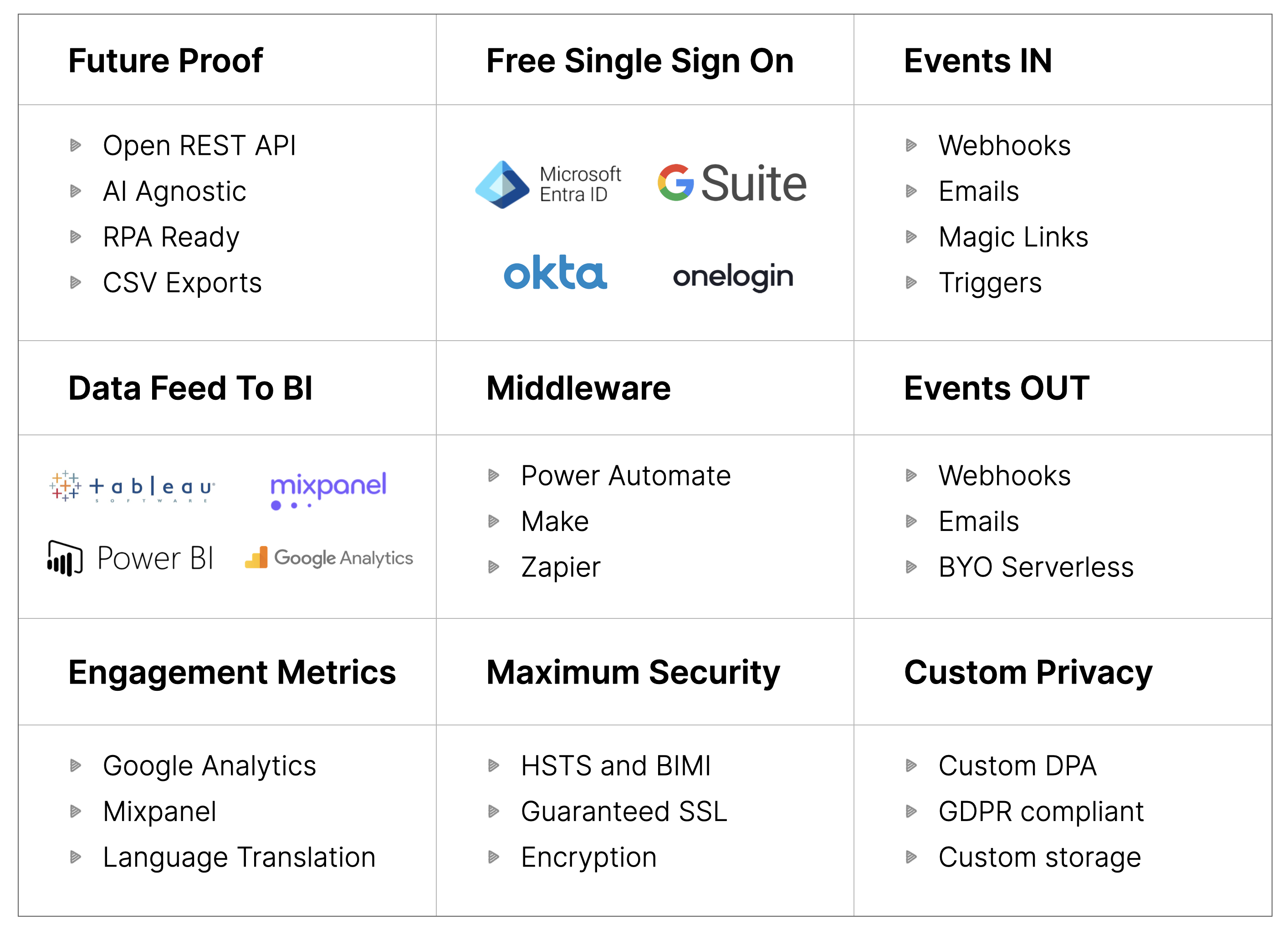The best alternative to Airtable
Tallyfy is a far better alternative to Airtable
- Design – We invented Workflow Made Easy®
- Pricing – Minimum purchase is 1 full member
- Support – Get expert 1:1 help free – for life
- Discount – For companies in

Tallyfy vs. Airtable
Airtable
Airtable
Airtable
Airtable
Airtable
Airtable
Airtable
Airtable
Here’s why people don’t like Airtable
This is third party content sourced from the public web. You can verify this content if you wish. See our disclaimer and citations section below.
Stop bleeding 2 hours per person, daily - on busywork
Just 3 simple steps to digitized workflows
Remove the adoption risk of Airtable

Define or upload your template using AI. Optionally add simple if-this-then-that conditionals. Add rich descriptions to capture tribal knowledge on every step.

Launch your process with a form or any other trigger. Invite unlimited guests or coworkers to complete tasks and fill out forms. Tallyfy handles auto-reminders.

Improve your process through feedback and metrics. Add steps run by AI. Automate specific steps if they’re worth it. Practice easy and continuous improvement.
Do you know the cost of busywork?
HEARING THIS?
- How do I do this?
- What's the status of this?
- I forgot we had to do that
- What comes next?
START TALLYFYING
- Every workflow - digitized
- Everyone is happy and efficient
- Newbies are auto-trained
- Grow revenue without chaos
TIME IS EVERYTHING
- US average wage is $44/h
- Nobody enjoys busywork
- Free up time for innovation
- Automate mundane stuff
Tallyfy does not charge for basic services
Need help? Unlike costly “professional services” at Airtable – Tallyfy guarantees free 25-minute screen-sharing calls with workflow experts for life.
SCHEDULE A CALL

Fair Price Guarantee
Tallyfy is well known because our pricing is discounted using the GDP-per-capita of your primary country. If you qualify you get an even better product with even more value. Choosing Tallyfy over Airtable is a no-brainer.
Fair Price GuaranteeIntegration and compliance information

- Open REST API
- SOC 2 Type II
- GDPR compliant
- BIMI and HSTS compliant
- Connectors to middleware
- Free SSO for all
- Webhooks and BI feed
- Language translation
- Bank-grade security
- Enterprise MSA & SLA
- More on integrations
What is Airtable used for?
As management consultant Peter Drucker said – “There is nothing quite so useless as doing with great efficiency something that should not be done at all.”
What exactly is Tallyfy?
Does Airtable have a discount for certain countries?
Is Airtable owned by venture capitalists?
How does Tallyfy handle process improvement?
As economist John Maynard Keynes observed – “It is better to be roughly right than precisely wrong.”
How does AI integration compare between Tallyfy and Airtable?
What are the main problems with Airtable?
How do you maximize the benefits of workflow software?
Where can I see customer reviews of Tallyfy?
Does Tallyfy offer free help and services?
How do I get started with Tallyfy?
As an Airtable competitor – Tallyfy excels where it counts
| Tallyfy | Airtable | |
|---|---|---|
| Specialism (Focus) | Built specifically as a workflow management platform with AI-powered automation. Designed for repeatable processes rather than one-off projects, ensuring operations remain reliable and scalable across your organization. | Functions as a general-purpose app-building platform requiring users to build their own workflow solutions. Lacks specialized process focus, putting the burden of workflow design on your team. |
| Pricing | Start with just one full member, with cost-effective Light member seats at only $50/year. Includes unlimited free guest collaborators, making it affordable to involve everyone in your processes. | Charges per editor seat ($20/user/month on Team plan). Costs multiply quickly as you add team members. Imposes usage limits on records and automations that force upgrades as your workflows grow. |
| Ease of Use | Intuitive interface requires no training—new users start interacting with processes within 22 seconds on average. Visual workflow setup with simple if-then rules allows anyone to create or follow processes without technical skills. | Steeper learning curve requiring an Airtable Academy and support community. Implementing sophisticated workflows demands configuration of bases, formulas, and sometimes custom scripts—requiring significant time investment. |
| Adoption (Team Uptake) | Achieves adoption in minutes rather than months with minimal training needed. Users begin engaging immediately after invitation, eliminating the friction that typically slows implementation. | Requires dedicated enablement efforts, with certified Services Partners available to assist with implementation. Free plan limited to “very small teams with lightweight needs,” making company-wide rollout more complex. |
| Security | SOC 2 Type II certified with A+ SSL security ratings. Offers Single Sign-On (SSO) for all users at no extra cost, with built-in compliance features for regulations like HIPAA and 21 CFR Part 11 available to all customers. | Restricts critical security features to highest-tier plans—SAML SSO and advanced admin controls available only on Enterprise plan. SOC 2 reports require contacting account managers, and regulatory compliance like HIPAA requires special enterprise agreements. |
| Support | Provides expert 1:1 support free for life to all customers regardless of plan. Offers responsive human assistance through in-app chat and email, ensuring your team never struggles with implementation. | Standard support relies on self-service Help Center and Community forums. Fast 24/7 support and Technical Account Managers only available through paid Premium Support packages, making timely assistance an additional expense. |
Tallyfy is a far better alternative to Airtable
Stop bleeding 2 hours per person, daily - on busywork
References and Citations
- [1] Airtable review on G2 – February 2025
- [2] Airtable review on G2 – February 2025
- [3] Airtable review on Capterra – February 2025
- [4] Airtable review on Capterra – February 2025
- [5] Airtable review on Capterra – February 2025
- [6] Airtable review on Reddit – February 2025
- [7] Airtable review on Reddit – February 2025
- [8] Airtable review on Gartner – February 2025
- [9] Airtable review on Reddit – February 2025
- [10] Airtable review on ProductHunt – February 2025
DISCLAIMER OF AFFILIATION, ACCURACY & LIABILITY
This page is an independent, good‑faith comparative review prepared by Tallyfy, Inc. (“Tallyfy”) and is based on publicly available information, third‑party reviews, and vendor materials current as of February 2025. The content is offered “AS IS” for general informational purposes only and does not constitute professional, technical, or legal advice.
- No Affiliation. Tallyfy is not affiliated with, endorsed by, or sponsored by Airtable Inc. “Airtable” and related logos are trademarks or registered trademarks of Airtable Inc.; all such marks appear solely for nominative, comparative reference permitted under the Lanham Act and the doctrine of nominative fair use.
- Dynamic Information. Features, service levels, and pricing change frequently and may have changed since the compilation date. Users should verify current offerings directly with each vendor before making purchasing decisions.
- Opinion & First‑Amendment Protection. All statements constitute Tallyfy’s opinion or commentary, which is protected speech when truthful and non‑misleading.
- No Warranties; Limitation of Liability. Tallyfy disclaims all warranties—express or implied—including accuracy, completeness, merchantability, and fitness for a particular purpose, and will not be liable for any loss or damage arising from reliance on this content.
- Overall Website Terms. Your use of this website is subject to our terms and conditions.